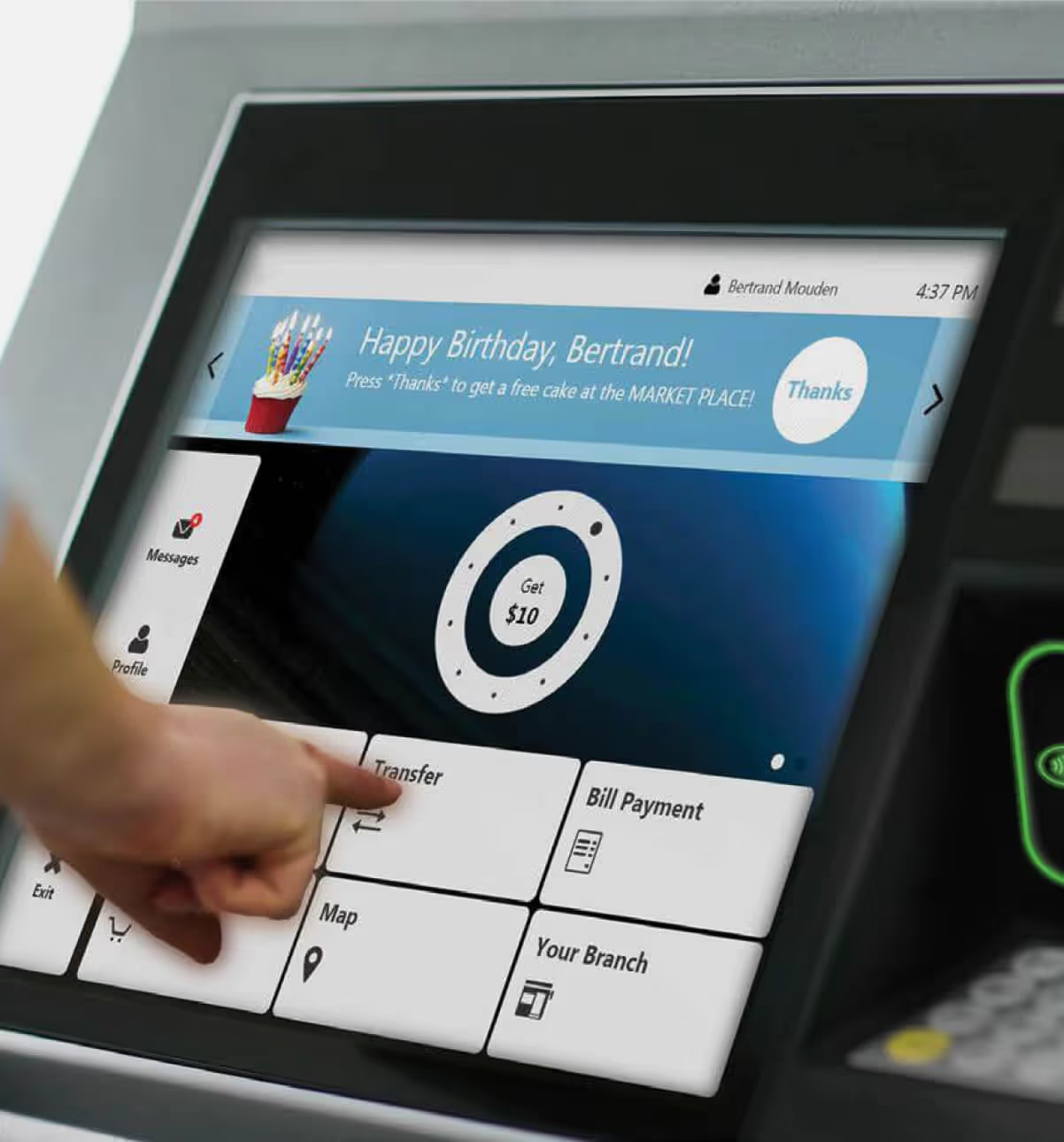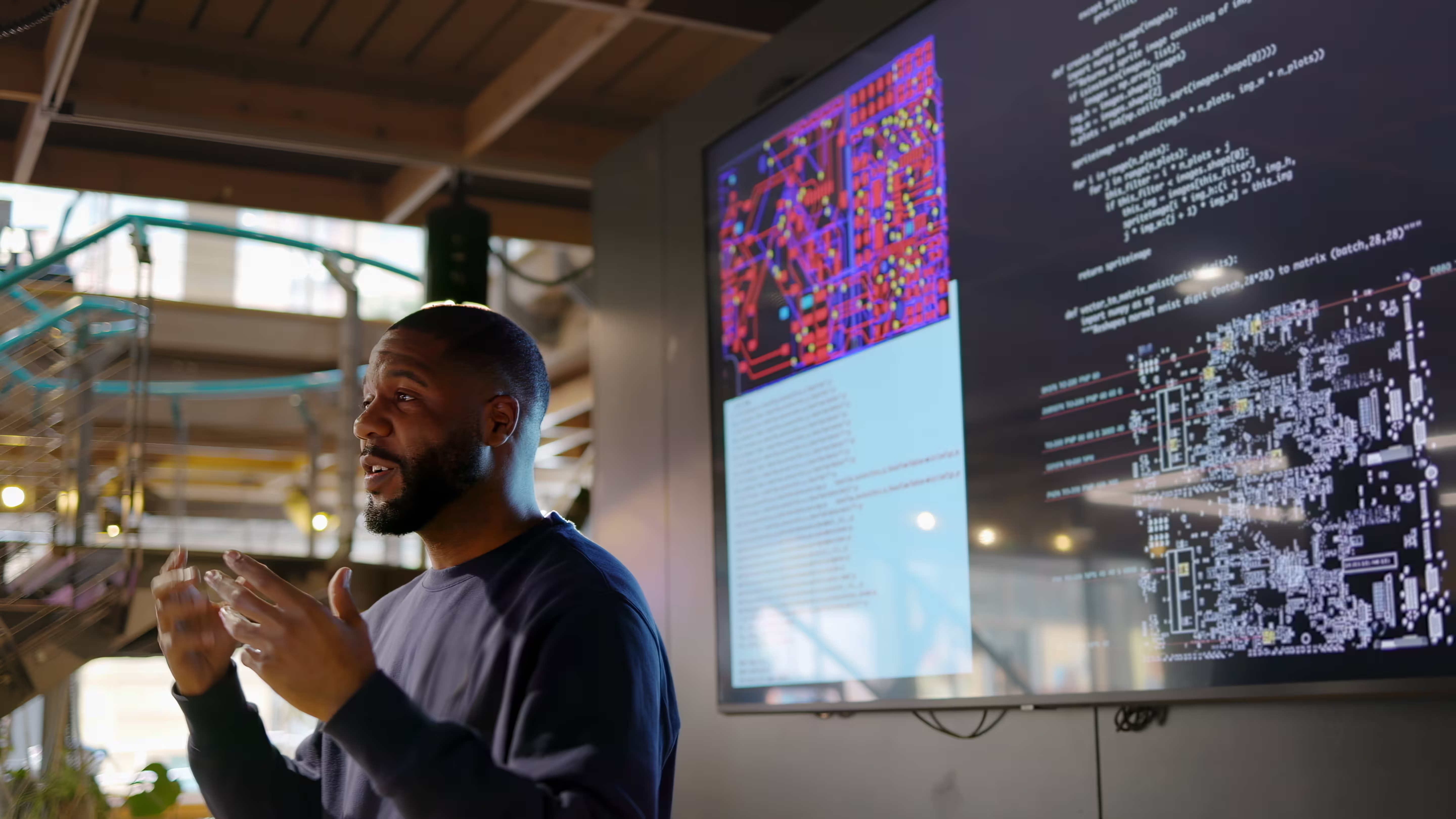What is branch transformation?
A recent Accenture study found that consumers across all generations and nearly all geographies still value physical bank branches in their neighborhoods. The study also found that more than six in 10 consumers turn to branches to solve specific and complicated problems.
So, it’s clear that despite the rise of digital banking, physical bank branches still hold significant value for consumers. However, the combination of increased digital banking adoption, escalating operational costs, evolving customer expectations and intense fintech competition is forcing financial institutions (FIs) to reimagine their branch strategies.
By rethinking branch locations and layouts, FIs can redefine their entire branch strategy. Striking the balance of digital innovation with personalized human interaction is key to providing optimal customer service.
FIs have the opportunity to reposition their branches as dynamic hubs for financial advice and personalized interactions through a combination of cutting-edge in-branch technology and expanded in-branch service offerings. This branch experience will foster strong, loyal customer relationships.
Why a tailored transformation is key
A one-size-fits-all approach to branch transformation is ineffective. Tailoring the transformation to specific business objectives and strategic goals is crucial. By leveraging digital tools, branches can streamline operations and automate routine tasks, freeing up tellers to dedicate more time to personalized advice, while simultaneously reducing costs.
Transforming the customer experience requires prioritizing customer relationships and understanding their financial needs. Customers value brands that offer seamless, frictionless tailored solutions and timely offers. While other industries have embraced this paradigm, financial services have historically lagged behind. To remain competitive, FIs must invest in technology that enables personalized experiences at scale, driving both customer satisfaction and bottom-line results.
Embracing transformative technology
By seamlessly integrating the latest innovations in branch technology with their existing infrastructure, FIs can optimize their branches and boost efficiencies. Modern self-service solutions empower consumers to conduct more of their simple, everyday transactions at their own convenience—and constant innovation is enabling FIs to shift more and more transactions to self-service, meeting consumer expectations for convenience and availability.
Some of the latest solutions that are helping to transform the branch include:
- Advanced ATMs and ITMs with innovative digital-first tech that optimize the branch and shift transactions to self-service
- Interactive digital terminals that offer account opening, loan applications and financial advice via touchscreens and video conferencing
- AI-powered solutions to enhance security, improve user experience and enable new functionalities
- Instant card issuance that allows customers to open an account and obtain a debit or credit card in hand in just three minutes
- Voice recognition and iris scanning that go beyond fingerprint and facial recognition for added security and convenience
- Hologram technology and transparent TVs that create a more modern and welcoming atmosphere in branches
Why human connection still matters
While digital technologies are revolutionizing branch operations and delivering convenience, the human touch remains irreplaceable. Empowered staff are the heart of the institution, connecting with customers on a personal level. As automation increases, branch employees provide personalized, one-on-one interactions, especially when customers are looking for expert guidance on complex financial matters.
The importance of seamless communications
As customers shift more to self-service channels, seamless connectivity between the different engagement channels (branch, call center, self-service or digital) is crucial. An omnichannel approach allows customers to seamlessly transition between online, mobile and branch channels without the need to re-explain their needs.
Making branches more efficient and profitable
As FIs review their branch strategy, maximizing customer experience and optimizing branch footprint and costs are essential. To enhance efficiency and profitability, FIs are focusing on the optimization of their real estate, elevating customer experiences, empowering staff, leveraging technology to drive new processes and offering innovative services.
By strategically locating branches, rightsizing their footprint, integrating digital technology and deploying self-service solutions, FIs can streamline operations and reduce costs.
Empowering staff through training and development, leveraging remote work and flexible staffing and utilizing AI and behavior analytics can also help to optimize operations, reduce costs and unlock opportunities for cross-selling, upselling and tailored product recommendations.
Finally, offering innovative services like personalized financial wellness programs and specialized services can attract and retain customers, driving revenue growth.
How staffing decisions can impact branch transformation
Many modern FIs adopt a universal banker model, where staff are cross trained to handle diverse tasks and services. This streamlines customer interactions and enhances satisfaction. Successful branch transformation hinges on effective employee engagement and empowerment to minimize disruptions and maintain service quality.
So, how can you transform your branches while ensuring a smooth transition? Leading institutions are succeeding by taking three key approaches.
- Look inside first: Assess your organization's current state and capacity for change. Align the transformation with strategic goals and customer needs. Understand employee culture and potential stakeholder resistance.
- Foster employee ownership of change: Communicate the transformation strategy clearly to employees. Encourage input and gather feedback. Involve employees to increase engagement and foster ownership.
- Share knowledge: Empower employees through comprehensive training and education. Education should focus on the 'why' and the strategic importance of the transformation.
The need for continuous branch transformation
As the financial industry’s landscape continues to evolve, FIs must embrace continuous branch transformation in order to maintain their relevance but also thrive in an increasingly digital world. By prioritizing customer experience, leveraging technology and empowering employees, FIs can create branches that are both efficient and customer centric. These transformed branches will not only attract and retain customers but also drive long-term growth and profitability.
Let’s explore what’s possible for your business. Our team is ready to connect and discuss tailored solutions that meet your goals.
Thank you for reaching out. A member of our team will be in touch shortly to continue the conversation.







%20(1).jpg)





%20(1).jpg)

%20(1).jpg)




%20(1).jpg)
%20(1).jpg)
%20(1).jpg)

%20(1).jpg)
%20(1).jpg)
.jpg)
.jpg)
.jpg)
%20(1).jpg)
.jpg)
.jpg)
.jpg)




.jpg)
.jpg)
.jpg)
.jpg)
